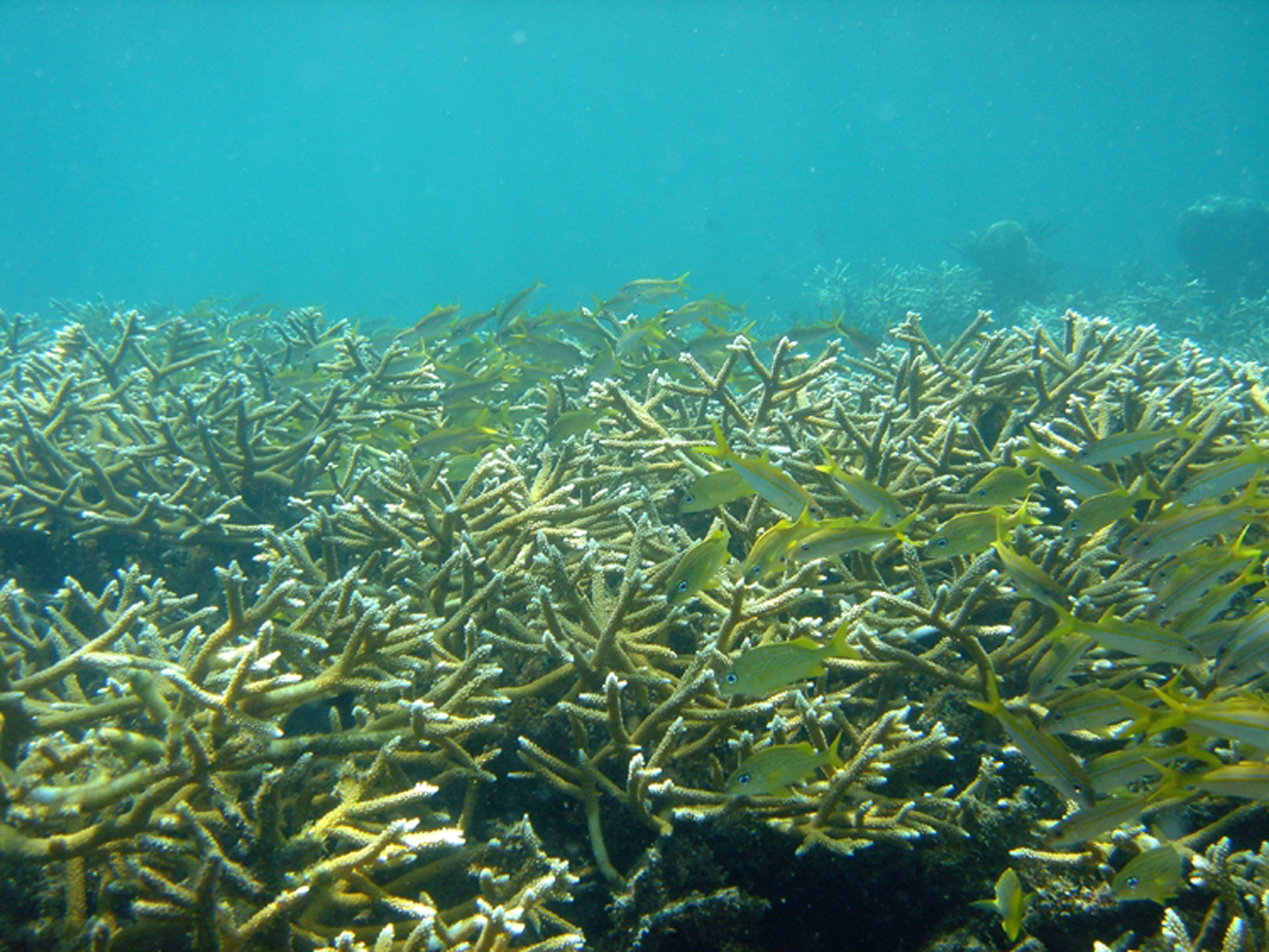A coral colony is made up of many individual, but genetically identical, coral animals living together. However, we can imagine the colony as a single animal, with each region performing different functions, just like the organs of our bodies. Our organs are controlled by many different genes that respond to certain stimuli, allowing the organs to perform their various functions. Similarly, a new study lead by recently graduated PhD student Elizabeth Hemond of the Vollmer Lab suggests that the different regions of a coral colony are controlled by different genes as well.
In the study, recently published in the journal BMC Genomics, Hemond, along with fellow PhD student Stefan Kaluziak, and Associate Professor Steve Vollmer, use cutting-edge gene sequencing technology to measure gene expression in distinct regions of two species of Caribbean Acropora, commonly know as the staghorn and elkhorn corals. Results indicate that different genes are active in the branch tips versus the branch bases, and that these genes play important roles in coral development and physiology. Additionally, some of the genes identified likely contribute to the distinct staghorn versus elkhorn morphologies of the two sister species.
These results indicate a strong division of labor and coordination of genetic activity between different regions of the coral colony, providing genetic evidence to support the idea of a coral colony as a super-organism, with individual regions performing essential functions for the colony as a whole.

